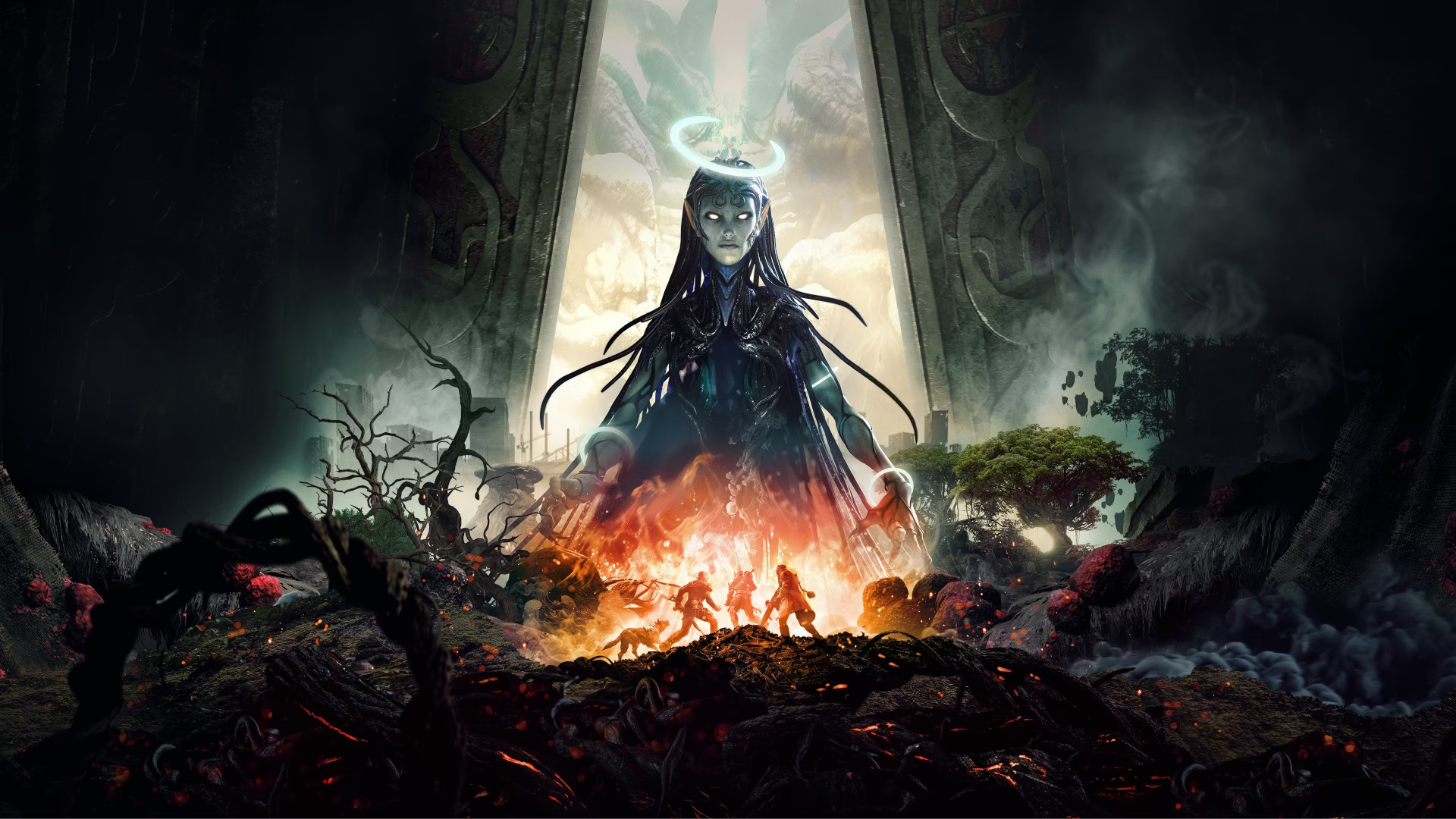Developed By: Gunfire Games
Published By: Gearbox Publishing
Platforms: PlayStation 5, Xbox Series X|S, and PC
Reviewed On: PS5
Keeping on the side of Destiny 2 and Diablo 4’s grindy live services – my gaming choices were pretty steep recently. Then came Remnant 2, a majestic blend of challenging souls-like dodging with a side of shooting combat that also rewards exploration. Along with procedurally generated maps and NPCs to keep things as fresh and alluring to keep me entertained. On a side note, although I’ve missed the first Remnant, I find that the sequel surprises me in every corner with its plethora of secrets, puzzles, classes, weapons, and mods.
Sounds And Art | Almost Impeccable
In my opinion, the soundscape and music in Remnants 2 are inseparable from gameplay, stacking up the urgency needed in both dodging once the sound of enemies attack cues comes in and constant awareness of surroundings once the music starts. While NPC’s voice lines are decent, the exploration aspects often invoke a sense of tranquil ominous stillness along with subtle winds, piano, and thematic string instruments. Only to erupt by incoming combat, as the music suddenly hits me with a horn blast or foghorn-like calls, giving a sense of a war cry for incoming swarms/hordes of enemies coming to get you from any corner (yes, they do pop up in any corner). Later on, sharp screeches ensued, signaling that the elite/mini bosses foes are coming, followed by heart-pounding percussions that tend to match the instruments with the world’s tone and design. Because of the soundtracks, it tends to escalate and drive me to scan every direction in a rush, as foes tend to pop up or teleport behind you in a surprise attack. While it is almost perfect, at times the combat music hinges in a loop once combat ends or stayed longer than expected.

In terms of level design, teleporting through the crystals, you are in for a visual treat as the level designs are like a magical canvas procedurally drawn to draw you into its spectrum of captivating landscapes, from the enchanting lush landscapes of Middle-Earth-like grounds reminiscent of the “Lord of the Rings” movies, or in contrast an eerie, metallic corridor of factories and spaceships akin to an “Alien” set with some references of ‘Pan Labyrinth’ movie landscapes and chalk doors to find. That being said, some of these worlds follow a linear design blueprint, while other worlds such as Nerud, unfold a wire open-ended world design and vast to explore along with multiple secrets. One way this is perceived as differently good, while the other is it’s just too vast to run around.
The enemy types in each world are a well-diverse bunch, making every encounter somewhat fresh but with similar weak points on them such as a head or a core in the middle or the back. Ranging from alien critters to droids, zombies to angelic demons, and even a formidable one-handed Sauron, the design range is pretty top-notch. But, not everything is perfect as the 3D models of the NPC’s hubs need more polishing as the 3D models tend to exhibit flickering shadows/Z-fighting and even lack facial finer details, making them look uninterestingly flat in comparison to the enemies’/bosses’ design.

Furthermore, while having multiple arrays of armor to choose from, which looks cool at the front yet the protagonist’s old bag pack facing the screen remains constant since the beginning of the game and its unchanging appearance despite my cool armor at the front can start to look monotonous on screen all the time.

Gameplay | To Die For
Prepare yourself to die a lot as enemies will tend to catch you off guard and swipe you away as fast as a Tinder app. In this 3rd person-shooter, dodging is really a crucial element as well as aiming and shooting the head/core to grant critical damage. That being said, it sounds easier as a shooting game but as mentioned above, enemies do tend to pop up anywhere and shoot you with an arsenal of their own or some with special moves to instantly kill you on the fly or at close range so be aware.

The gunplay will initially come off as a little jittery, especially in confined spaces, but it felt better once your shots connect as it triggers a responsive flinch response from enemies except bosses. Head and leg shots tend to trip foes, leading to satisfying gunplay, akin to game titles such as Division or Outriders. What elevates it further is the sounds and music that gels well with the experience as mentioned above. While the game offers a variety of guns and melee weapons, each with its own unique shooting patterns, swing, sounds, feels, and secondary attacks. Each weapon has its own ways to deliver more stylish and brutal headshots damages, some more than others to the point of delivering more anime-inspired powers such as summoning a hologram laser cube at enemies or wielding a samurai’s disruptive wind slashes with a specific sword. As well as mods that come with amplifying elemental effects, shooting up beams, or summoning tentacles to fight alongside you – an engaging addition to explore your arsenals and try it out whether you like it or not. Acquiring these weapons, traits, and mods usually involves interactions with specific NPCs, boss battles, and puzzle solving – even more so with the exploration in the procedurally generated worlds.

Exploring is the main key to the game to truly reward players on its NPCs, puzzles, and side quests, ensuring each unique take on the experience themselves. Even the point of a single puzzle offers multiple or deeper solutions that yield multiple loots, and weapons. Selectively in adventure mode, players can reroll the world to find out what they missed on that specific world and re-explore encounters with different bosses, puzzles, and NPCs, leading to different solutions and outcomes, giving a more diverse loot reward as well as different classes. Repeating the same choices often results in more materials or more scraps for upgrading weapons and mods. That being said, rerolling the world two to three times, you’ll likely experience most of the procedural segments as the variety here seems only but a handful, so it gets less exciting over time with lil to no escort missions in between. On a side note, keep in mind that each world is inconsistently designed where one world felt linear in exploration with some variations of branching paths while the other is just vast with some hidden secrets in between.

While you can obtain as well as switch between classes and have two multi classes to use at any point in time, however making the builds on the other hand is pretty challenging on its own; as it presents some level of grinding elements into play. As the main staple ways to make these builds mostly involve obtaining certain specific weapons, and rings, and, crucially, accumulating sufficient materials to upgrade mod levels that give a secondary effect such as critical shots afflicting bleed status effects. It is a shame that most of the weapons and armor only focus mostly on attack powers and armor stats in itself which does very little to diversify more possible builds to excite me even more in every change such as by example cowboy hats to give higher firing rates or a higher range of shots. The process demands particular loot of rings, amulets, and mod leveling for a more potent end-game build, rather than facilitating an all-in-one approach as I don’t mind leveling up a specific armor set just to get secondary effects that come into play by example… Adding on, re-equipping, and changing armors, mods, and gears seems to take longer and a hassle than it should, as everything in the UI appears scattered and are hard to keep track of.
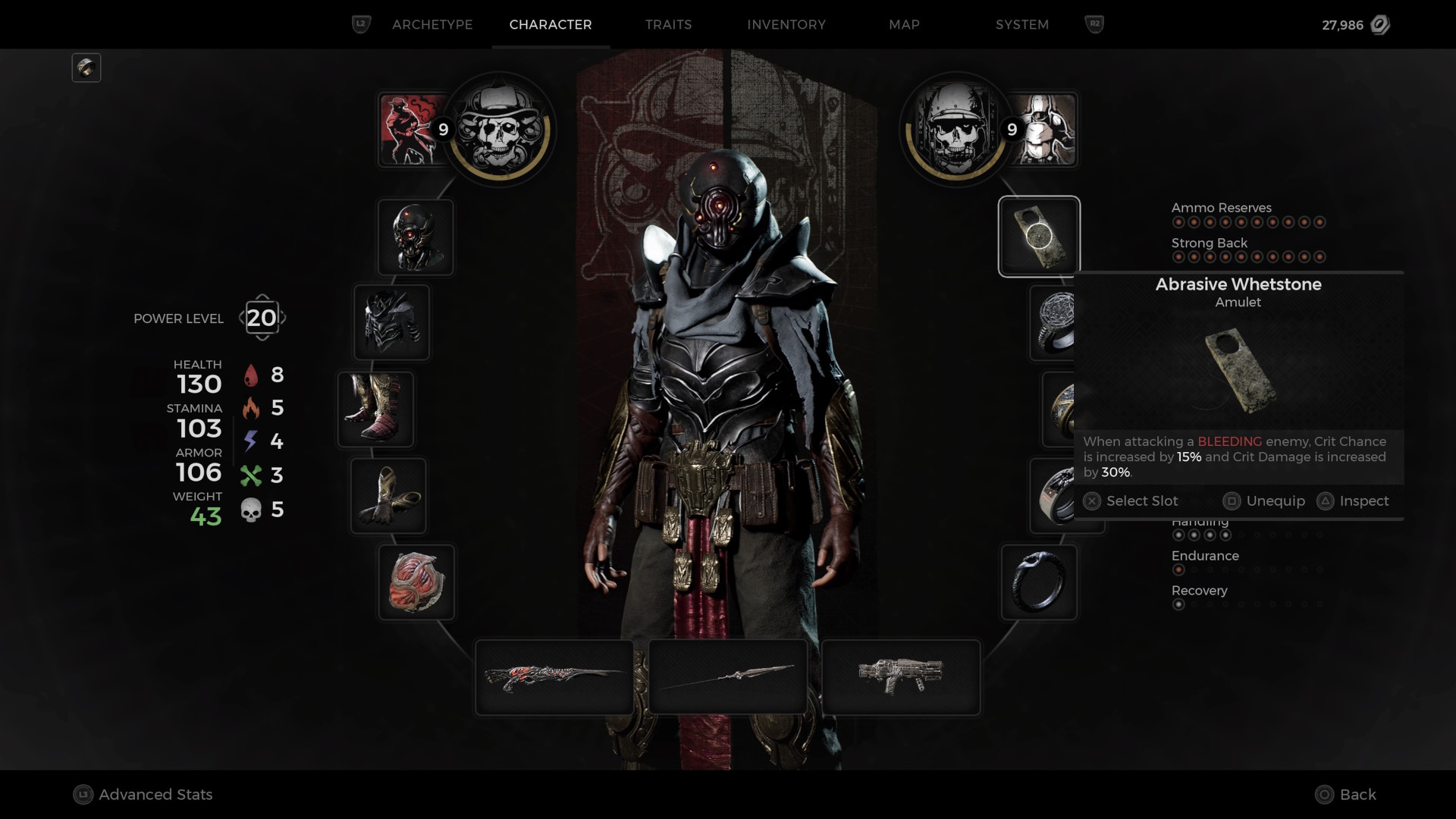
UI And Multiplayer | Pretty But Cluttered Along With Crashes
At a glance, the UI looks presentable with a captivating circular analog design, invoking a form of otherworldy or Stargate vibe. Yet, as my collections of mods, rings, armor, and weapons start stacking up, the inventory management tends to get overwhelming and a challenge in itself to manage over extended gameplay. This in turn just forced me to stick to one build as it takes a hassle and a long time to figure out and manually place which mods, weapons, and items to go with. Hence, an interchangeable preset loadout is essential to switch or improve my builds on the fly, especially in situations that demand more DPS versus prioritizing survivability. In the long run, the gameplay shifts from immersive 3rd person action to micromanaging inventory and items to suit the current situation demands.
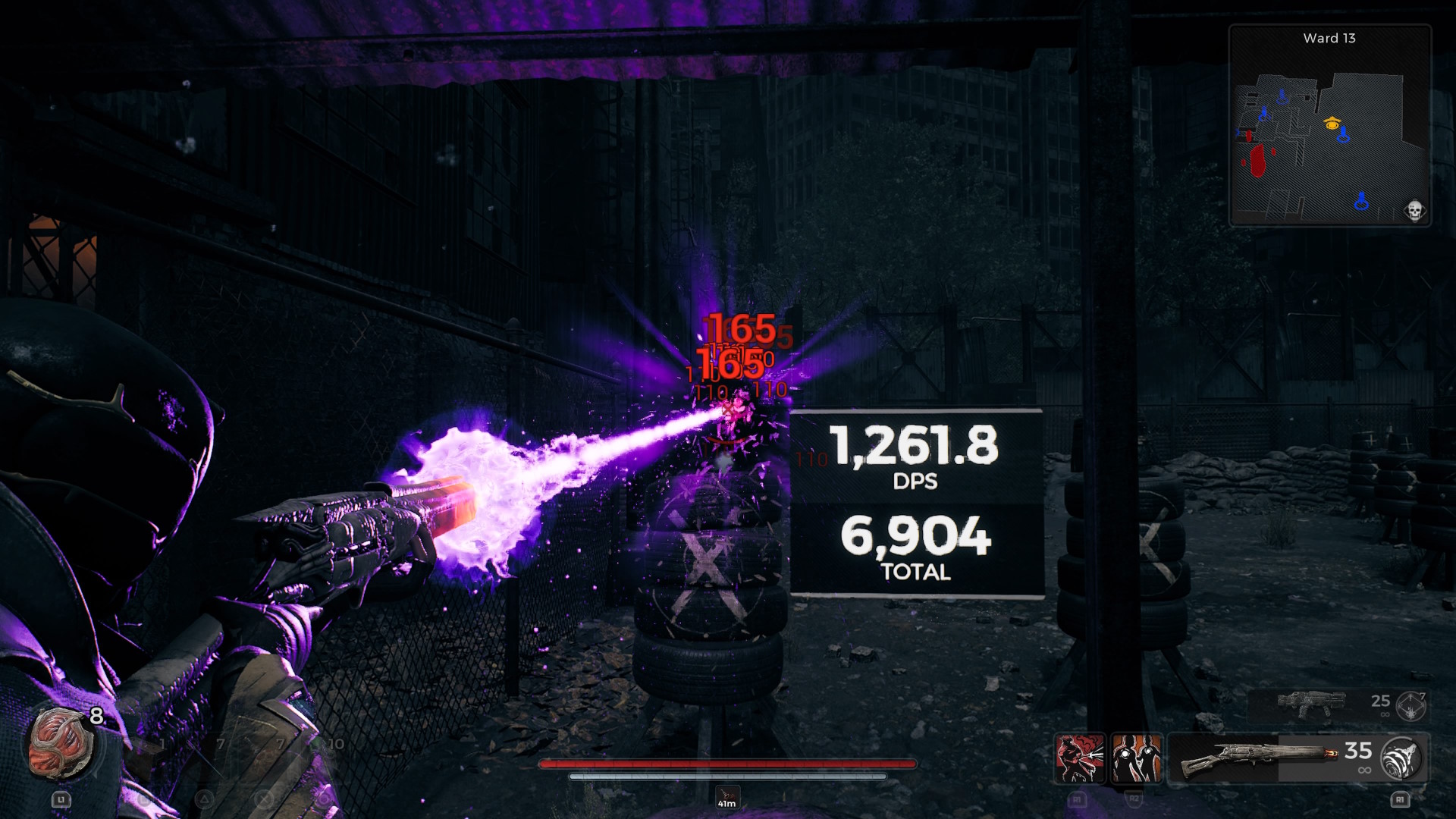
Adding to the color-coded indicators for poison/blight statuses, while at times can be helpful, but also confusing as over time I couldn’t recall which is which as they are having the same skull icon but in a different color format. Furthermore, opening maps or looking through the map layout on the side presents a challenge as well – as the overlapping levels require me to mentally flip maps to find the right path via staircases or elevators. In the maps section, a pointer for pinning the maps is clearly needed to ease navigation and reduce the cluttered lost feeling while navigating through the seams.
On the multiplayer aspects, I really do enjoy joining my friends or strangers online to help out as the enemies or bosses do not scale to the number of players in the game and we definitely help each other in a form of a strike team with added bonus of friendly fire available. Even more so that if I died, I do still get the loots they obtained in any activity before or during gameplay.

Unlike its friendly fire, the only thing unfriendly thing that multiplayer hits a snag is about the waiting time needed to be revived upon arriving into a host game via crystal checkpoints or by the host’s death. Joining up a host game often pulls me into spectator mode throughout that can bore me if the host decides not to use the crystal checkpoints. It would be great if I can just pop up into the game at the nearest checkpoint immediately. As well as automatically group up when moving to new areas, as the host requires all members to be present nearby before moving up to another area which can be a hassle as at times some of us are exploring elsewhere when it happens.
Prior to the recent updates, the multiplayer segments are marred with unstable crashes specifically when the host is traversing between worlds. Thankfully it seems to be addressed by the recent updates however a new issue emerged where I occasionally got stuck on loading screens when joining other host’s games for a pretty long time or nonstop – unsure if this is a related issue/bug. Adding on that exiting multiplayer will kick me back to the main menu, regardless if it’s a connection issue or being kicked out of the host game which feels like a long roundabout detour rather than seamlessly reconnecting me back into my world. Speaking of my world, NPCs tend to repeat the lines themselves since the first act without any proper follow-ups of my game progress. Even more so speaking to them first with the same lines over and over again just to open up their shop, which speaks volumes to the storytelling world ahead.

Storytelling | Far Too Short And Far In-between
For starters, the main story plot is really short as you uncover a plague occurring in your world, discover your hub, and ability to use the checkpoint crystals to traverse between different worlds (five to be exact). Only to fight a few gods like creatures and go straight to the source of the plague which is fighting another god-like creature again, like a simple RPG story.
Everything else in between is peppered with cryptic writings to create the atmosphere of the world and the inhabitants seem to be fixated that you have arrived in their world as an anomaly, paxultek, or other terms to make it look like your kind is really special which is solely a form of stroking players ego.

While this makes it seem to be a fully realized world with its own bearing of history and culture – I find that it still lacks substance as I yearned for more tidbits and immersive experience of walking alongside through the story with me in its environments, meeting other dynamic NPC’s and even the loading screen. Speaking of loading screens, the focus on item stories rather than the world you are in itself felt really pointless and redundant, considering I could access these details on my own via inventory.
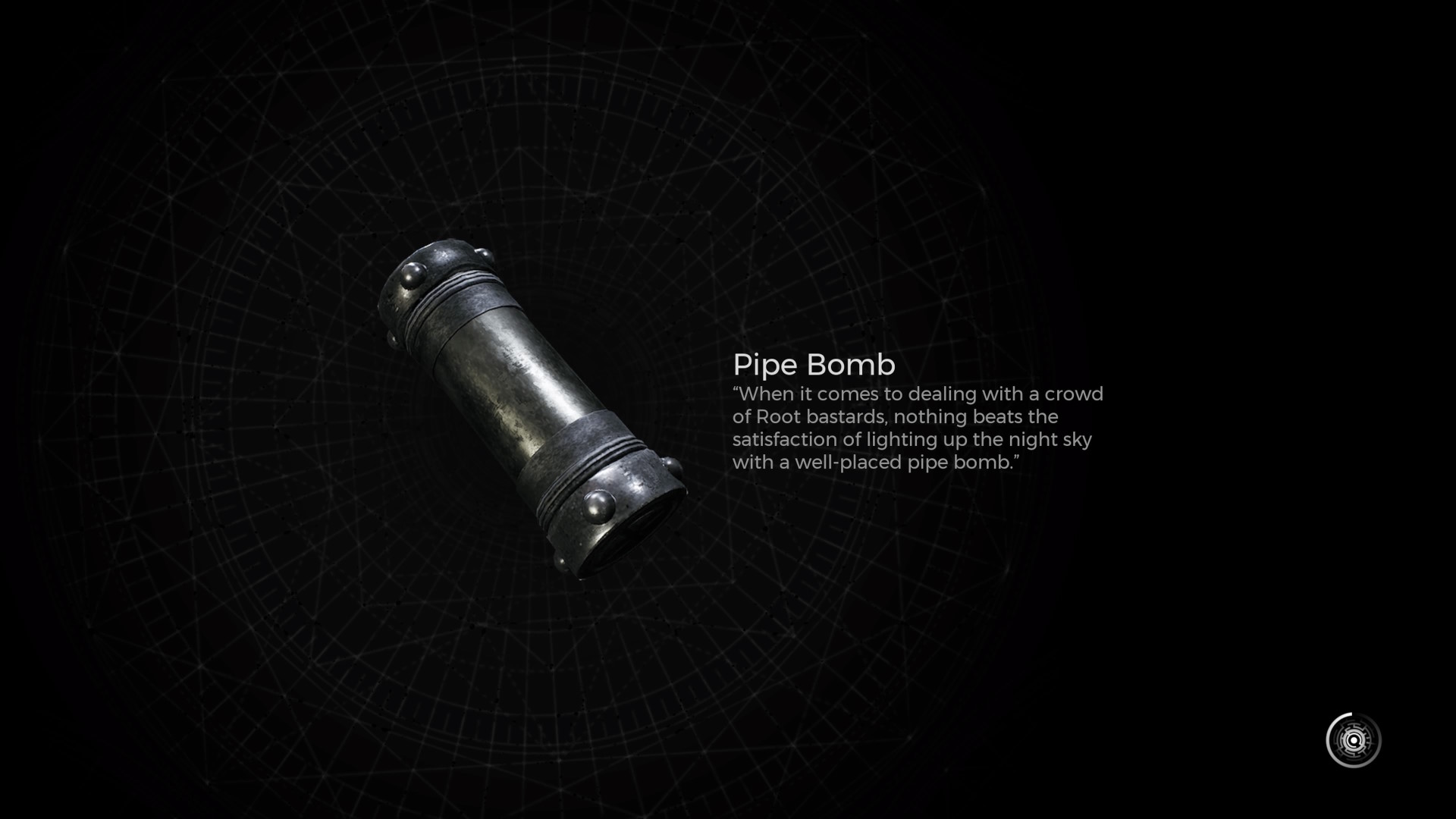
The storytelling NPCs in every world, while fixed in their specified rooms seem rather detached from my journey especially when they didn’t spawn in my first few playthroughs, leaving the majestic world I am in feel too hollow for me. It wasn’t until later that these specific characters materialized after rerolling, although I pretty much skipped their lines like how I skipped Mudtooth in my homeworld because throwing all the lines to just one or two NPCs just makes it feel too overwhelming and tiresome to read through instead of a few tidbits throughout. Moreover, they spawned procedurally with their specific rooms, and nothing in between the paths you pass by, in order to keep my interest level in check. In my opinion, this is by far the weakest link to the game that failed to keep me caring about the many worlds and their inhabitants, unsure if I need to play the first game to fully appreciate its story overall.

What I Liked About REMNANT II
- Exploration – Massive ways with different worlds procedurally generated to keep things fresh.
- Gameplay – Multiple gameplay elements from puzzle solving, gunplay, boss fights, horde clearing along with heavy elites as well as inspecting items to get through a locked door.
- Rerolling adventure mode – Ability to reroll the worlds with different NPC, bosses, and puzzles at the crystal checkpoint.
- Music and sound – An absolutely steal.
- Enemies design – Quite varied and quite a handful to shoot at. Feels good shooting at them as they react.
- Multiplayer – Friendly fire and shared loot drops even if I died before or during gameplay. As well as option to choose the offline mode and online mode is available as well in the main menu which is a plus
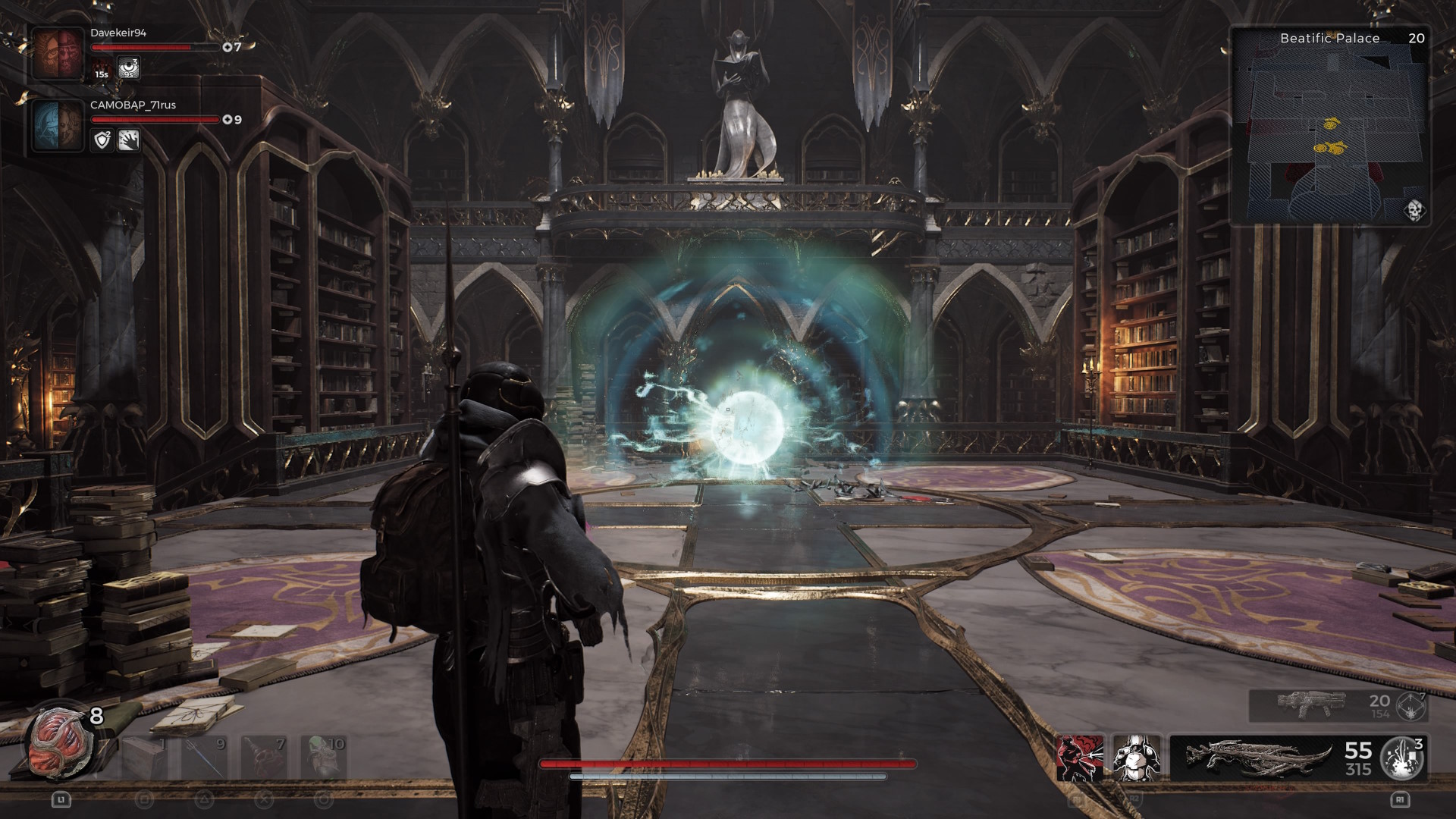
What I Wished Was Better
- UI map and equipment – The map design is layered but needs an option to manually include waypoints for easy navigation. Mods, relics, and ring equipment need to be cataloged separately as it looks cluttered later. Separate save loadout is another best alternative to make an easy switch.
- Main character 3d model – The armor design looks cool but over time looks lackluster as the bag looks worn out at the front of the screen.
- Inconsistent pacing between worlds – Some worlds are linear in design while others such as Nerud are open-ended and large to explore, one way this is perceived as differently good, the other it’s just too vast to run around.
- Multiplayer – Mild occasional instances of crashes and unending loading screen as well as odd spectator view mode upon loading into a host game.
- NPC designs – Npc’s 3D models especially at the hub come with shadows flickering or Z-fighting as well as a lack of details on some of the NPC on the field such as their faces.
- Hubworld NPC lines – NPCs tend to repeat the lines themselves since the first act.
- Storytelling – Loading screens should also include the world’s storyline because not all NPCs are available in the first playthrough. Items descriptions in the loading screen felt redundant.
European media have been full of praise for #Remnant2 recently. We’ve released a very special version of our Accolades Trailer with an exclusive brand-new song by @TriviumOfficial vocalist and guitarist @matthewkheafy, Wielder of the Plague! pic.twitter.com/WZqjizRTOT
— Remnant 2 – Europe (@Remnant_Game_EU) August 16, 2023
Verdict | A Conversational Starter
Despite the bumps and hiccups in the UI intricacies, multiplayer issues, and storytelling, REMNANT II still manages to carve out a long-forgotten trend in a gaming landscape that is currently dominated by its ARPG or the straightforward action genres. For me, it has successfully rekindled the joy of sharing and making lively discussions among a circle of friends as well as strangers – sparking fervent conversations about loot discoveries, multiple puzzle-solving elements, and even boss encounters that some of which have multiple choices or outcomes to do so. This level of conversation harks back to the time when gamers collectively exchanged their insights on “how to”. Reminiscent of those pre-internet days when Mortal Kombat’s fatalities were one of those topics on how to execute which in my book is one of a definite triumph in this day and age.
